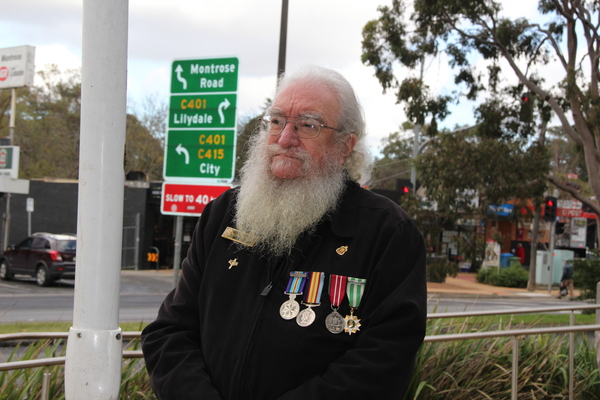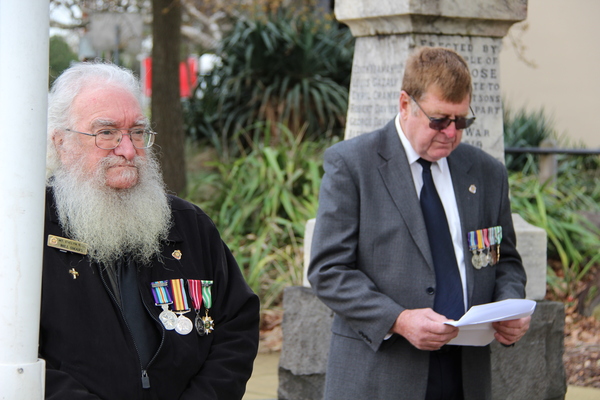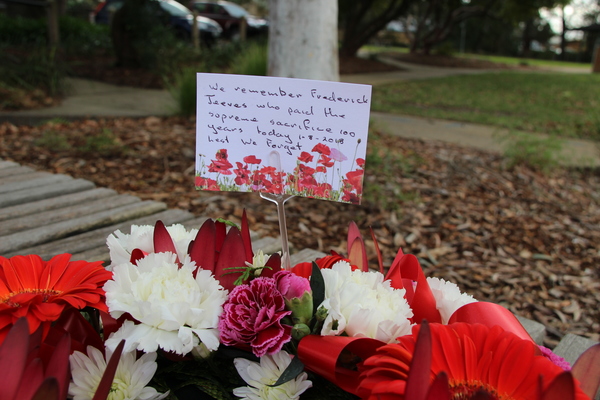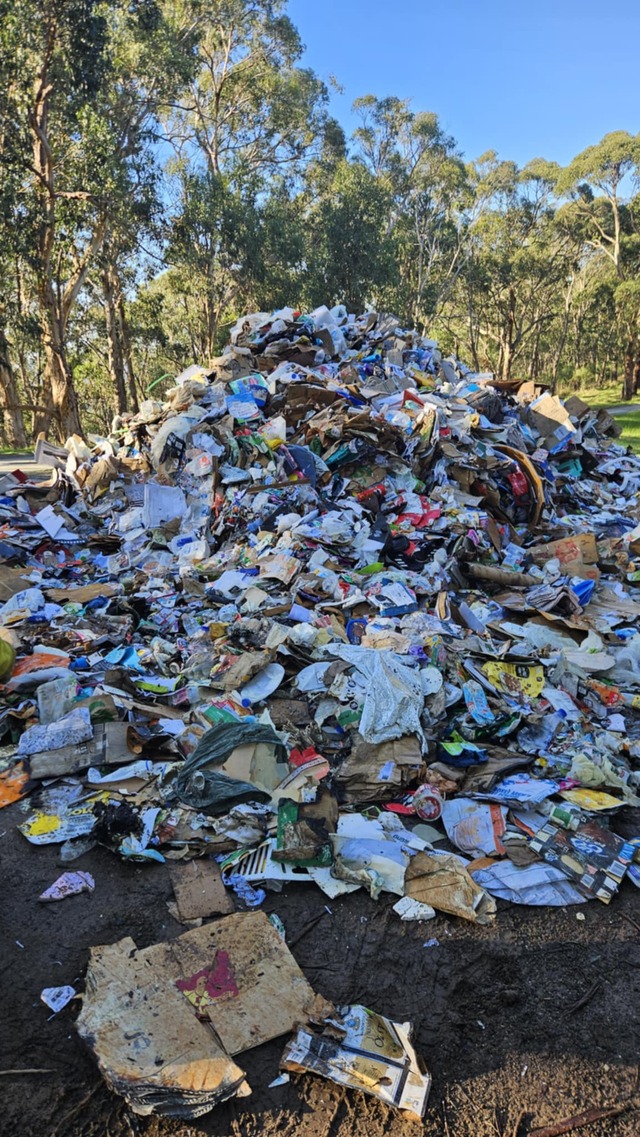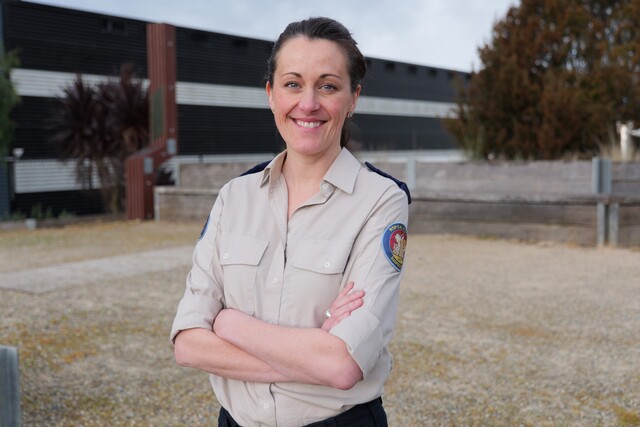It’s been 100 years since Frederick William Jeeves died on a battlefield in France.
Mount Evelyn RSL president Roger Boness and member Bill Smart honoured the Montrose man with a brief but stirring service at the Montrose War Memorial on the anniversary of his death.
It’s a ritual the Mount Evelyn and Lilydale RSLs started to mark the Centenary of Anzac, back in 2014.
Mr Boness said they’d tried to track down and invite family members to each event, and some travelled from as far afield as Sydney to honour their ancestor’s sacrifice.
The RSLs will have paid tribute to about 60 soldiers by the time they wrap up in June next year, at war memorials in Montrose, Wandin, Mount Evelyn, Yarra Glen, Silvan and Lilydale.
James Wallace and James Payne are up next up, at Wandin at 11am on 26 and 31 August respectively.
Mount Evelyn secretary Anthony McAleer said the final service would take place in Mount Evelyn and would honour a submariner.
He laid down on top of the submarine when it surfaced but fell asleep, and was killed when it resubmerged.
“In 1912 he’d joined the navy – he was one of the first in the area to enlist,” Mr McAleer said.
Frederick Jeeves’ death was far more brutal.
He was born in 1886 at Mount Dandenong and walked down the mountain daily to attend Montrose State School.
Frederick attended the Working Men’s College in Melbourne to learn signwriting and at age 16 took up a contract with the shire to build a road at Kalorama.
In his late teens he drove the Mountain Mail and Passenger Coach from Mount Dandenong to Croydon .
He learnt all he could about the vehicle’s mechanics, decided to become a motor mechanic and opened his own garage in Montrose.
Frederick married Violet Vera Cazaly in 1913 and they had two daughters, Linda Maree and Edith Cavell.
He enlisted on 1 February 1916 at the Melbourne Town Hall, and later wrote to his wife that “I would rather die with a little wooden cross above my head than be one of those who could have gone and did not”.
Frederick’s medical records show he was 167 centimetres tall and had blue eyes and brown hair.
After training at Royal Park he was allotted to the 14th reinforcements for the 22nd Battalion.
He left Australia from Station Pier, Port Melbourne, aboard the HMAT Themistocles on 28 July 1916.
He joined the 22nd on the front line trenches on the Somme as the 1916-’17 winter started.
Frederick was wounded in the chest in January 1917 when a bomb from a rifle grenade exploded.
He spent most of 1917 recovering from his wounds in hospital before attending retraining and re-joining his unit in December.
In January he transferred to the 6th Field Company Engineers and was part of the force set up to defend Villers Bretonneaux.
On 1 August 1918 he was killed in action during an artillery barrage, aged 30.
Frederick is buried at the Villers Bretonneaux Military Cemetery in France.
His lieutenant later wrote he was “absolutely one of the very best”.
A newspaper tribute from his wife and daughters read: “The German shrapnel did but kill the body, not thy spirit fine. That liveth still to work its will, within thy country’s heart and mind.”


